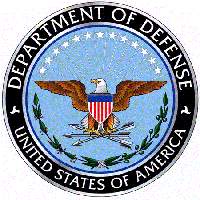
Even in the face of major changes wrought by the end of the Cold War, money for
such work continues today. The laboratory's funding has remained fairly stable
since 1990.
Gone almost overnight was the emphasis on strategic defense against missiles
from Soviet submarines in the depths of the oceans, according to Robert
Spindel, director of the Applied Physics Laboratory. The top priority now
is the ability to deal with limited regional conflicts which may involve
land/sea operations in coastal waters. The emphasis is on how systems operate
in shallow water, not deep water.
There also was a recognition in the early '90s that not all the funds allocated
for defense needed to be spent in the same way, says Spindel. Researchers
across the nation hoped that some of those dollars and some military technology
would go to civilian scientists.
One outcome was the Strategic Environmental Research and Development Program,
championed by Vice President Al Gore, to use Department of Defense money for
broad environmental research. Among other things, the program provided $35
million for a project involving the UW, Scripps Institution of Oceanography and
other institutions to establish a global network of underwater transmitters and
receivers to detect ocean warming. UW project leaders Spindel and Jim Mercer
say that if the oceans are heating up in response to global climate change, the
time it takes sound to travel between two points will get progressively shorter
because sound travels faster through warmer water.
The scientists rely on many of the receivers originally used to track Soviet
submarines. Other civilian scientists use formerly secret networks of
receivers in the oceans to monitor such things as sea floor earthquakes and the
migration routes of whales. Instead of listening to the enemy, scientists are
using the networks to listen to the Earth.
Oceanographers, fishermen and geologists interested in locating minerals are
among those taking advantage of maps created using masses of what used to be
top-secret data about the ocean floors. Nuclear submarines have been put at
the disposal of civilian scientists three times. The lab's Jamie Morison and
Roger Colony were on the first, historic mission aboard the USS Pargo looking
for signs of global warming by sampling and assessing the Arctic Ocean and ice
pack.

Such broad uses of
Department of Defense equipment and money, however, may have already run their
course, Spindel warns. As its budget has shrunk, the military has stepped
back from many initiatives. The U.S. Navy's budget, for instance, is half of
what it was at the height of Ronald Reagan's administration. And, unlike some
military research, it has proven impossible to wring any kind of peace-time use
from existing bombs and weapons technology. There are some swords that will
never be turned into plow shares.
Opportunities continue to change. Just last year, an Applied Physics
Laboratory group led by Peter Kaczkowski conducted a pilot project that
advances the use of pulses of electromagnetic energy to detect and describe
metal objects in the ground.
Finding the best ways to discern shell fragments from unexploded ordnance such
as bombs, mortars and mines is a key to cleaning up military installations that
have been used for testing weapons and training troops, Kaczkowski says. The
problem is formidable: Millions of acres have been contaminated with ordnance
and explosive wastes, some which penetrated the ground as deep as 10 feet and
some that are perfectly capable of exploding if mishandled.
The island of Kaho'olawe, the eighth largest of Hawaii's islands, is but one of
900-plus sites needing to be cleared. For 50 years the island was used for
bombing, rocketry and gunnery practice. Almost every type of conventional
ordnance, ranging from small arms ammunition to 16-inch naval gun shells to
2,000-pound bombs have been dropped or fired on Kaho'olawe. Most of these
items detonated as intended, but not all. Now the federal government must
clean up the 45-square-mile island in order to return it to civilian uses.
It was only after the federal government began earmarking numerous military
installations for permanent closure that the military stepped up funding to
find the best instruments to detect ordnance and explosive wastes, Kaczkowski
says. "This was never a major concern during the Cold War," he says.
His work has a slightly different twist than projects where military
technologies have duel civilian uses: In this case, Kaczkowski believes the
military can wring additional information from technology used for years by
civilians prospecting for mineral deposits.
What's particularly ironic, he says, is that the scientists who pioneered this
technology 30 years ago were from -- where else? -- our Cold War adversary, the
Soviet Union. *
Sandra Hines writes about oceanography, fisheries, botany, and forestry for
the UW Office of News and Information.
Return to the Beginning of "Getting Defensive"
APL Home Page
Send a letter to the editor at columns@u.washington.edu.


